White Spots On Teeth: 3 Effective Ways To Get Rid Of Them
No more off-putting, bad-looking spots and stains on your teeth, thanks to these tips.
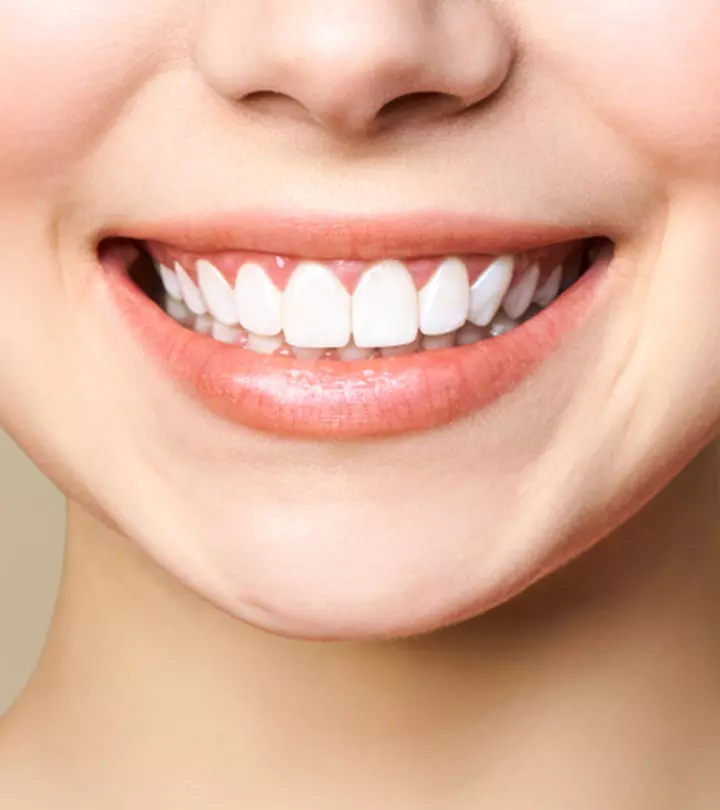
Image: Shutterstock
If you have ever noticed white spots on your teeth while inspecting your teeth in the mirror, you are not alone. This is a common condition, and you can easily get rid of these white dots from your teeth with simple oral hygiene practices. Studies show that excessive fluoride exposure can cause white spots on teeth (1). According to the American Dental Association, you can prevent white spots by brushing your teeth twice daily (2). Keep reading to learn more about the spots on your teeth and how to get rid of them.
In This Article
Why Do I Have White Spots On My Teeth?
White spots, also known as white spot lesions, develop due to loss of minerals on the enamel, which lead to our teeth looking discolored and mess with our aesthetics. Having these white spots can make you feel conscious when you talk or smile (3). However, worry not because dentists and orthodontists have a host of procedures that help remove these white spots. But before we go to the treatment options, let us first understand what causes white spots on teeth. The following are factors that are known to contribute to the development of white spots on your teeth.
- Dental Fluorosis
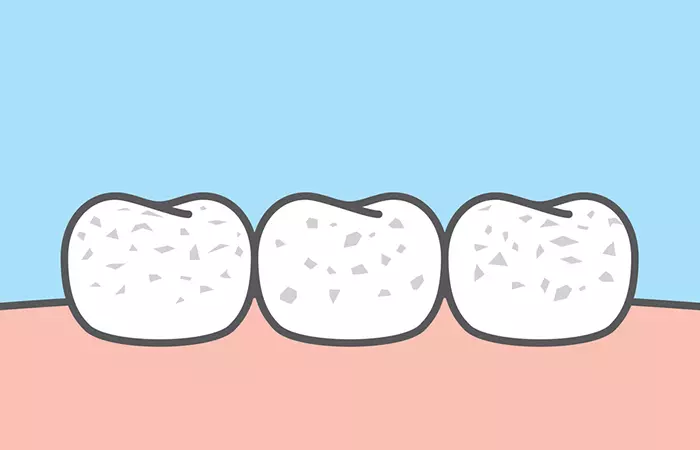
Dental fluorosis occurs when you develop white stains on your teeth due to constant exposure to excessive fluoride over a long period of time (4). This is a condition that only develops in children and is not found in adults (5). You can recognize if your kids have dental fluorosis by checking for white streaks on the teeth. A study was conducted to examine the prevalence of dental fluorosis between adolescents from 1986-1987 and 1999-2004. The study found that adolescents who were between 12-15 years of age between 1999-2004 had a higher prevalence rate of 41% than adolescents between the same age group in the 1986-1987 survey (6).
- Enamel Hypoplasia
Enamel hypoplasia is a defect in the enamel that develops during the formation of enamel which results in the development of thin enamel (7 ).” This is a condition that develops during your childhood when the teeth are forming and can lead to the development of white blotches on teeth. These stains can be removed by putting dental crowns on the affected teeth (8).
- Presence Of Bacteria And Other Microbes
Did you know that your mouth is the ideal breeding ground for bacteria? Researchers reviewed the existing literature on white spots and found that the presence of bacteria in our mouth can contribute to the development of white spots (9). An overgrowth of bacteria can lead to the formation of bacterial plaques in your mouth, making it even more important to practice good oral hygiene.
- Diet

You may not know this, but the food that you eat has an impact on what your teeth looks like. Food that is highly acidic and sugary can lead to the formation of white bumps on your teeth. How does that happen? When you have a high level of acid and sugar present in your mouth, it can lead to the mineral in your teeth wearing away, which results in the development of white spots (9).
You just read about the different factors that cause white bumps on teeth. Now, let us find out how we can get rid of these spots if you already have them and a few simple tips to prevent them from developing in the first place.
3 Ways To Get Rid Of White Spots On Teeth
Don’t worry if you have white splotches on your teeth. With access to a multitude of treatment options available today you can get rid of white spots on teeth with the help of a good dentist.

- Resin Infiltration – A cost-effective procedure used by dentists today to treat white spots. In this procedure, the tooth is coated with hydrochloric acid, dried with an ethanol solution, and coated with a resin infiltrant. A study was conducted on children between the ages of 8 to 14 years to check the effect of the resin infiltration technique on white spots. After a six-month follow-up, the results showed that there was a significant reduction of white spot lesions in the children (10).
 Pro Tip
Pro Tip- Microabrasion – A procedure highly recommended by orthodontists for removing white stains on teeth. In this procedure, acidic and abrasive materials such as hydrochloric acid and silicon carbide are used to remove the white stains from your teeth (11).
- Dental Bleaching – With the advent of technology, doctors are coming up with various ways to keep you happy and smiling! One of the methods commonly used by dentists to get rid of white patches on teeth is dental bleaching. During this procedure, your dentist applies acid on your teeth, followed by an oxidizing agent on your enamel. Then it is put under a laser to speed up the lightening process (12). Going through two or three sittings of dental bleaching can help you get rid of those white patches on teeth and keep them pearlies shining.
- Teeth Whitening – Teeth whitening treatments may effectively reduce white stains on teeth caused by various factors, such as fluorosis or enamel hypoplasia. Professional dental options include in-office whitening procedures or take-home kits with bleaching agents prescribed by dentists. If you’re looking for a brighter smile, these treatments can also help whiten your teeth, making them appear more uniform and vibrant. Over-the-counter whitening toothpaste, gels, or strips might also help diminish mild stains.
- Demineralization – It involves the use of remineralizing agents to address white stains on teeth caused by mineral loss. Remineralizing toothpaste or gels with fluoride, calcium, and phosphate may help restore minerals to the enamel, strengthening and repairing the affected areas (13). Professional dental treatments like fluoride varnishes or remineralization therapies may also help in reversing early-stage demineralization, preserving tooth health, and reducing the appearance of white stains on teeth. Regular dental check-ups are crucial to assess and manage demineralization effectively.
A blogger shared their experience with dental whitening. They said, “I had zero pain during the entire process, and only had one instance of pain a couple hours later. My fiance, on the other hand, started with tingling which moved into pain so bad he wanted to stop the process early. He made it through both rounds, but definitely did not want a third round. We were both happy with our results, and walked out with take-home trays for an additional whiter shade (i)”.
These were the three ways to get rid of white spots permanently. If you do not have those white spots yet, then let us look into a few tips to prevent them.
5 Prevention Tips For White Spots On Teeth
You can follow these simple tips on how to prevent white stains on teeth:
- Reduce Consumption Of Highly Acidic And Sugary Food – Making simple yet doable changes to your lifestyle can prevent you from developing white spots. High content of acid causes the minerals in our enamel to wear, resulting in many people being at risk of developing tooth decay. While there is nothing wrong with eating all these foods once in a while, too much consumption of these foods can lead to the white stuff on teeth we do not like. It is highly recommended that you wash your teeth with water after consuming these items to avoid developing white stains.
- Use Fluoride Products – It seems ironic that excess fluoride can cause white bumps and now fluoride products can help get rid of them right? Researchers conducted a study on a group of 723 participants to see the effect of fluoride products on their teeth. They concluded that using a sodium fluoride or stannous fluoride mouth rinse every day reduced the amount of decay in the enamel (13). Dentists encourage using fluoride toothpaste recommended by the American Dental Association to maintain daily oral hygiene (14).
- Use Dietary Fluoride Supplements – Excess fluoride can cause you to develop white dots on teeth. This is because fluoride helps in reducing the process of demineralization of your enamel and helps in the remineralization of enamel (3). The American Dental Association recommends a set of dietary fluoride supplements that can be given to children between the age of 6 to 16 years to prevent or get rid of the white spots (6).
- Dental Veneers – These are thin coverings that protect your teeth from developing white spots and tooth decay. Going to your dentist and getting dental veneers fitted can help keep your teeth strong and healthy (15).
- Good Oral Hygiene – Today, it is essential for adults and especially children to be educated on practicing good oral hygiene. Brushing your teeth twice a day, drinking water after consuming sugary food, and flossing can go a long way in reducing the risk of developing white spots.
 Quick Tip
Quick TipUsing fluoride products, trying dental veneers, and practicing good oral hygiene can help you in preventing these white stains. You probably did not know this, but there are various types of stains that can develop on your teeth. Let us delve in further to understand more about them.
Types Of Stains On Teeth
Dentists recognize two types of stains that can develop on your teeth. They are:
- Intrinsic Stains – As the name suggests, this is a type of stain that is found on the inner layer of your teeth. This stain develops on the hard layer that lies beneath the enamel called dentin, creating those annoying stains. Intrinsic stains are caused by various factors such as fluorosis, age, or oral trauma (16).
- Extrinsic Stains – These are stains that are found on the enamel of our teeth and are caused by several factors such as consumption of acidic food, dark-colored food, or smoking (16).
Be it intrinsic stains or extrinsic stains, both of them are bad for our teeth and can make us think twice before we smile. Let us read further to find out what kind of vitamin deficiency causes white spots to develop.
What Vitamin Deficiency Causes White Spots on Teeth?
There are some important nutrients that are essential for the development of healthy teeth. Lack or absence of these nutrients can cause white spots to develop. These are the following nutrients that are known for white patches on teeth. They are:
- Vitamin D – Have you heard your doctors say get some sun on you every day? The sun is a good source of vitamin D along with foods such as fish. This is a vitamin that is essential for healthy teeth and bones. Studies have shown that low vitamin D levels can negatively impact tooth mineralization (17). This can lead to you developing white spots on your teeth.
- Calcium – Calcium is a nutrient that we all know is required for the development of strong teeth and bones. The deficiency of calcium can lead to tooth decay, weak teeth, and the development of osteoporosis (18). Dentists recommend eating foods rich in calcium such as milk, cheese, and yogurt. For those of you who are lactose intolerant, the American Dental Association recommends non-dairy options such as tofu, beans, and almonds (19).
- Phosphorus – It helps rebuild tooth enamel. This plays an important role in keeping the jawbones healthy and functional.
If you notice white spots on your teeth, it may indicate fluoride overexposure or overindulgence in highly acidic foods. These white stains can be of two types, depending on where they are found, and can be caused by various factors. This dental condition can be corrected by medical intervention. Consult your dentist to understand what procedure may be the most suitable for your pearls. You can prevent these spots by following good oral hygiene, reducing fluoride exposure, or using dental veneers. The white spots may also indicate underlying vitamin D or calcium deficiency.
Frequently Asked Questions
Do white spots on teeth mean cavities?
White spots on teeth may indicate the early stages of tooth decay or cavities. At this stage, cavities may still be stopped and reversed.
How long does it take for white spots on teeth to go away?
Depending on their cause, white spots may go away within a few days, take upto 6 years to disappear or persist for a lifetime.
Key Takeaways
- Defective enamel, excess fluoride exposure, diets containing highly acidic and sugar foods, etc., can cause white spots on teeth.
- Vitamin D and calcium deficiency may also contribute to the formation of white spots.
- Microabrasion is one of the most recommended treatments for this condition, while you can also opt for treatments like dental bleaching.
Watch this video on effective methods for removing those pesky white spots on your teeth. Discover tips for achieving a confident, radiant smile that you will love to flaunt.
Personal Experience: Source
StyleCraze's articles are interwoven with authentic personal narratives that provide depth and resonance to our content. Below are the sources of the personal accounts referenced in this article.
(i) My Zoom Whitening Experience (With Pictures!)https://thereasonableblonde.blogspot.com/2012/04/my-zoom-whitening-experience-with.html?m=1
References
Articles on StyleCraze are backed by verified information from peer-reviewed and academic research papers, reputed organizations, research institutions, and medical associations to ensure accuracy and relevance. Read our editorial policy to learn more.
- How Too Much Fluoride Causes Defects In Tooth Enamel
https://www.sciencedaily.com/releases/2020/02/200218143719.htm - Brushing Your Teeth
https://www.mouthhealthy.org/en/az-topics/b/brushing-your-teeth - “Diagnosis” Prevention And Treatment Of White Spot Lesions Related To Orthodontics
https://clinmedjournals.org/articles/ijodh/international-journal-of-oral-and-dental-health-ijodh-5-085.php?jid=ijodh - Dental Fluorosis: “Exposure” Prevention And Management
https://pubmed.ncbi.nlm.nih.gov/19179949/ - Prevalence And Severity Of Dental Fluorosis In The United States “1999-2004”
https://www.cdc.gov/nchs/products/databriefs/db53.htm - Fluorosis
https://www.cdc.gov/fluoridation/faqs/dental_fluorosis/index.htm#:~:text=Dental%20fluorosis%20is%20caused%20by - Enamel Hypoplasia Associated With Congenital Hypoparathyroidism
https://www.aapd.org/globalassets/media/publications/archives/goepferd-03-02.pdf - Treatment Of Enamel Hypoplasia In A Patient With Usher Syndrome
https://www.researchgate.net/publication/51535324_Treatment_of_enamel_hypoplasia_in_a_patient_with_Usher_syndrome - Risk Factors And Management Of White Spot Lesions In Orthodontics
https://www.ncbi.nlm.nih.gov/pmc/articles/PMC4072374/ - Resin Infiltration Technique And Fluoride Varnish On White Spot Lesions In Children: Preliminary Findings Of A Randomized Clinical Trial
https://pubmed.ncbi.nlm.nih.gov/30560818/ - Microabrasion: A Treatment Option For White Spots
https://pubmed.ncbi.nlm.nih.gov/25631722/ - Dental Bleaching Techniques; Hydrogen-Carbamide Peroxides And Light Sources For “Activation” An Update. Mini Review Article
https://www.ncbi.nlm.nih.gov/pmc/articles/PMC4311381/ - Prevention and Treatment of White Spot Lesions in Orthodontic Patients
https://www.ncbi.nlm.nih.gov/pmc/articles/PMC5426141/ - Fluorides For The Prevention Of White Spots On Teeth During Fixed Brace Treatment
https://pubmed.ncbi.nlm.nih.gov/15266503/ - The ADA Seal Of Acceptance
https://www.mouthhealthy.org/en/ada-seal-products - The Success Of Dental Veneers According To Preparation Design And Material Type
https://www.ncbi.nlm.nih.gov/pmc/articles/PMC6311473/ - An Overview Of Tooth Discoloration: “Extrinsic” Intrinsic And Internalized Stains
https://pubmed.ncbi.nlm.nih.gov/16262034/ - Vitamin D Deficiency And Oral Health: A Comprehensive Review
https://www.ncbi.nlm.nih.gov/pmc/articles/PMC7285165/ - Oral health In Young Women Having A Low Calcium And Vitamin D Nutritional Status
https://pubmed.ncbi.nlm.nih.gov/25359326/
Read full bio of Dr. Archna Agrawal
Read full bio of Arshiya Syeda
Read full bio of Dipti Sharma





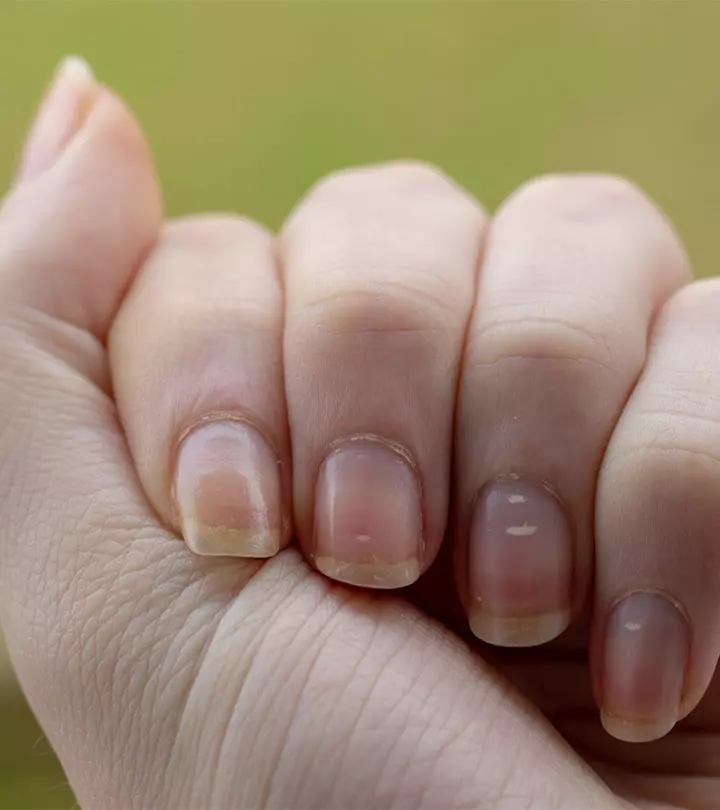




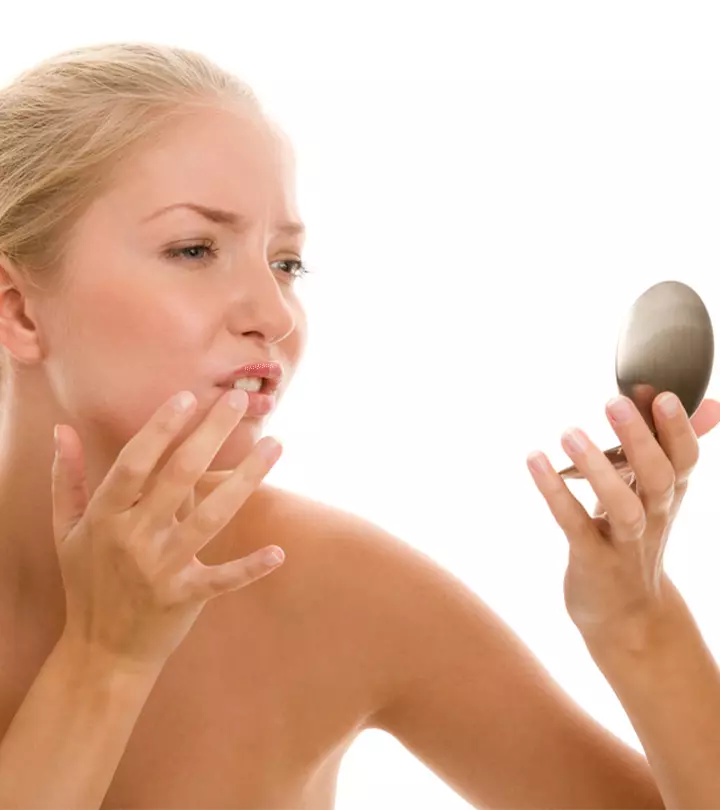

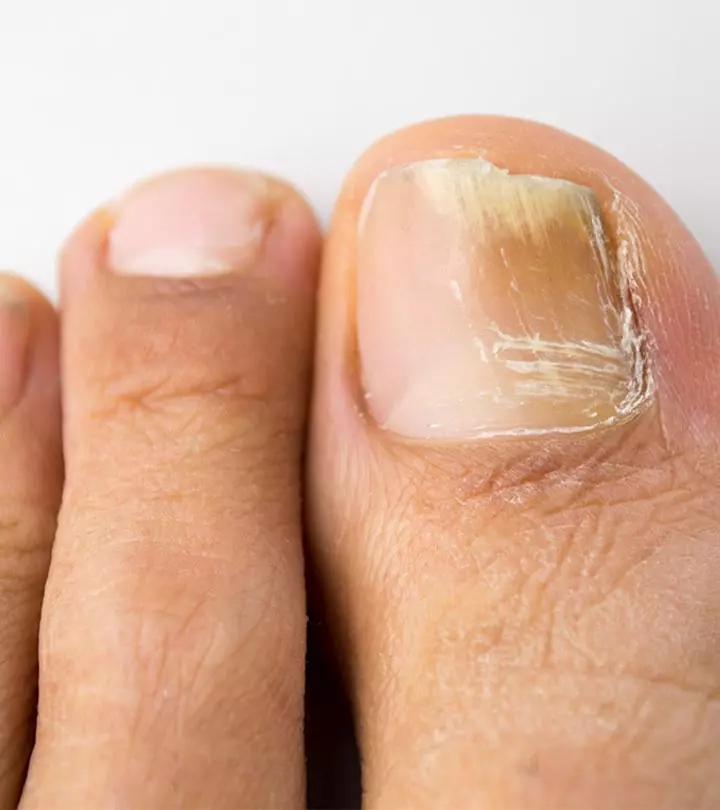




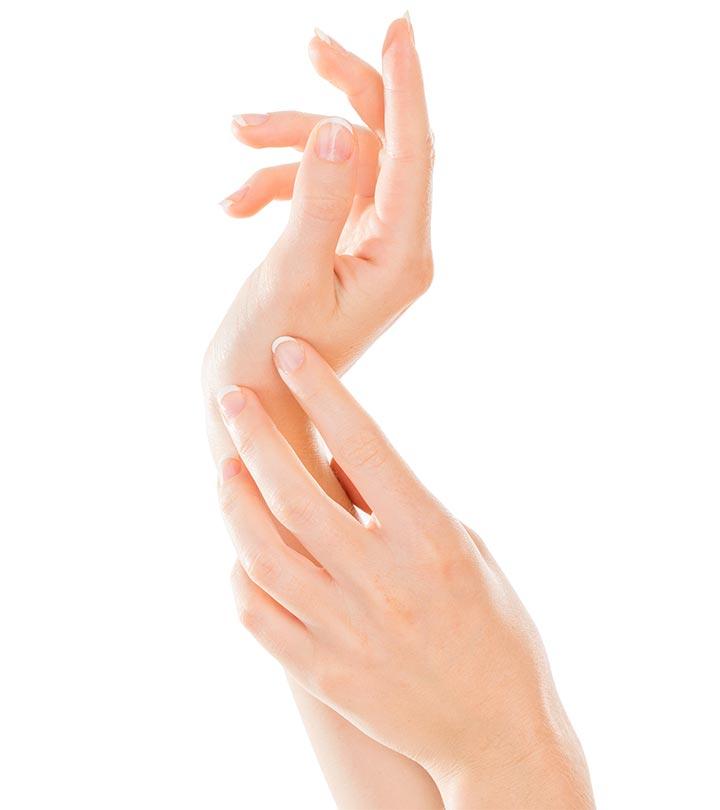






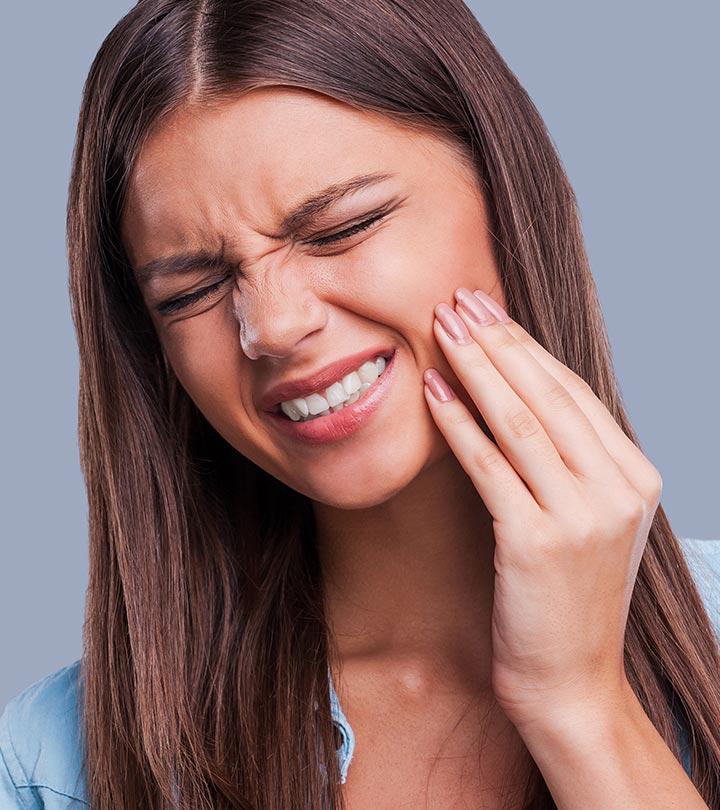

Community Experiences
Join the conversation and become a part of our empowering community! Share your stories, experiences, and insights to connect with other beauty, lifestyle, and health enthusiasts.